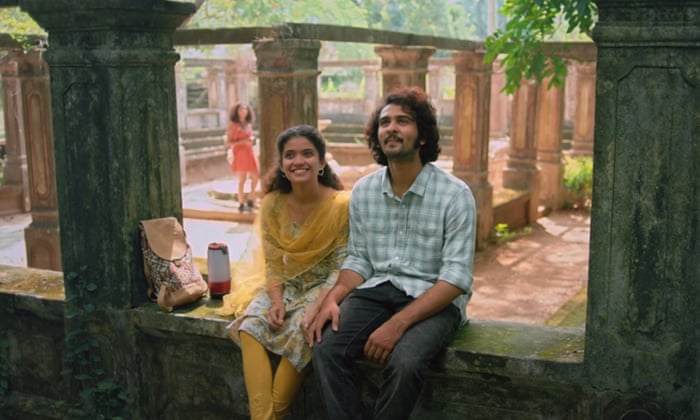Movie - The Great Indian Kitchen
Cast - Nimisha Sajayan, Suraj, Venjaramoodu, T. Suresh Babu
Rating - 4.5/5
This movie by Jeo Baby has to be one of the most important and
relevant movies to come out of the Indian film industry in the last decade. It shows
a mirror to the audience to reflect upon the existing patriarchy in our
society and our households.
The movie takes us through the daily lives of a nameless
newly wed couple. We will call them Girl and Boy for the sake of it.
In the first scene of the movie, the girl is shown doing what she loves to do, with a subtle foreshadowing of the world she will be getting into after her marriage. The Girl and Boy get married and she enters the Boy’s family with dreams for an exciting new future. Unfortunately, the Girl is pushed into the kitchen right from day 1. The dynamics in the house is made clear where the male members of the family are shown relaxing (the boy does yoga, while the father-in-law is even handed his toothbrush in the morning), while the female members of the family grind it out in the kitchen. This dynamic is ingrained in our psyche from a very early age, and this is further emphasized when the newlywed couple go for their first dinner invitation after marriage. In that scene, the director beautifully captures the patriarchy in the house, by showing the male members of the family are being served food, while the female of the family irrespective of their age is down the pecking order to get their dinner. The mother advises her young daughter to not sit but serve everyone on the table, while in the background an old woman is shown awaiting her dinner in another room.
The movie drives its point strongly through the use of repeated
visuals and minimum dialogues like the shot of the dirty dining table after the
men of the family have had their meal and that of the women cooking and cleaning.
Then the girl’s mother-in-law goes off to her
daughter’s house and the entire responsibility of the household falls on her
shoulders alone. The mother-in-law goes through the same ordeal but in a
different place. It shows the extent to which the patriarchal idea has been
embedded and passed on for generations. This also highlights a very
common tradition which has been passed on for generations that the mother is
responsible of taking care of her pregnant daughter so that the husband can
“relax” and lead his routine life.
The audience is bombarded with images of food items being
cut, cooked and utensils being cleaned in the kitchen in a deliberate attempt by
the director, and it successfully drives home the point that it intends to
make.
In another scene, which signifies the protagonist’s
situation, the kitchen sink gets clogged (just as her life has got clogged in
this kitchen) and the stench which stays in her hand after she unclogs it
signifies the stench the kitchen has left in her real life, which she cannot
get rid of.
The movie also shows the other side of the spectrum, where the girl’s friend invites her for a function, and her friend’s husband is cooking food in the house. This gives hope that our society is slowly undergoing a change where the man and woman of the house take up equal responsibilities of the household.
The indifference of the husband to any of his wife’s
concerns and difficulties is appalling and any question raised on the men of the family is interpreted as a question on their manhood and
dominance.
Another very significant scene is when a male guest comes
to the girl’s house and decides to make dinner for all. After making dinner,
the male guest proclaims the ease of cooking while completely oblivious to the
big mess the kitchen is in, in the aftermath of the dinner cooking.
The movie further explores the mistreatment of menstruating
women of the family during the auspicious month when the Sabrimala pilgrimage
takes place. The age old and outdated traditions are still forced upon the
menstruating members of the family, and it is another reflection of the
patriarchal mindset and tradition of the society. These traditions and rituals are justified in the name of retaining the culture, while turning a
blind eye on humanity. It also partially covers the Supreme Court judgement on
the Sabrimala issue and its reaction in the society. The rituals of the
Sabrimala pilgrimage actually reflects the position of women in this
patriarchal society.
The leaking pipe under the sink represents the patience of
the protagonist which is wearing out slowly throughout the movie, and it
perfectly set us up for the climax of the movie.
The acting ensemble
are filled with such natural actors that it does not seem like we are watching
a movie. Nimisha Sajayan is the star as she brings the protagonist’s
role alive, and you feel for her throughout the movie. The
cinematography by Salu K. Thomas takes up the major weight of movie as his shots
hit the audience hard. The real winner of this movie is the director and writer Jeo Baby, who puts us through a guilt ride by showing how everyone in
this society contributes to the patriarchy and mistreatment of women. The time has come to
change the society from its core.




















